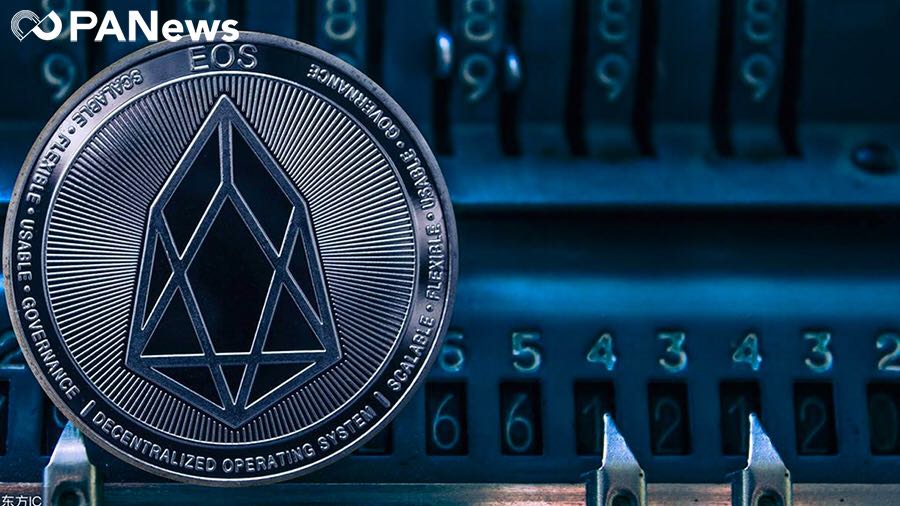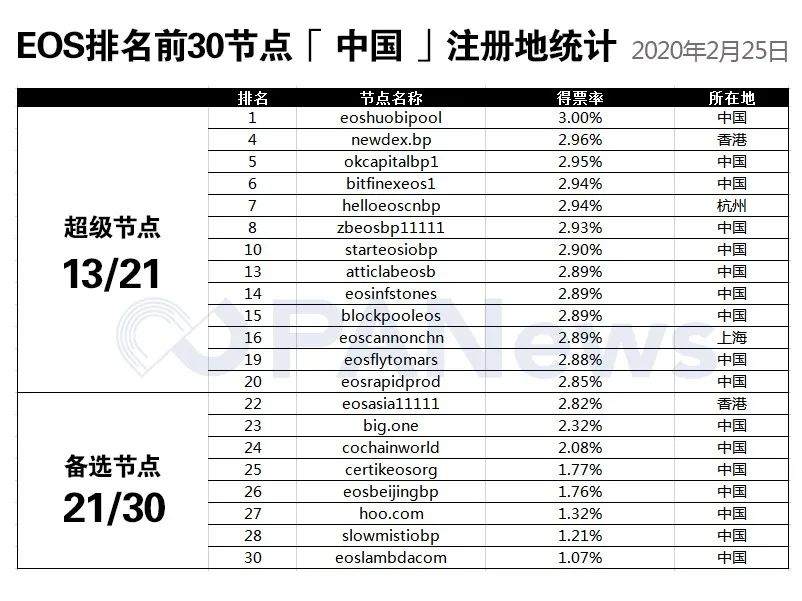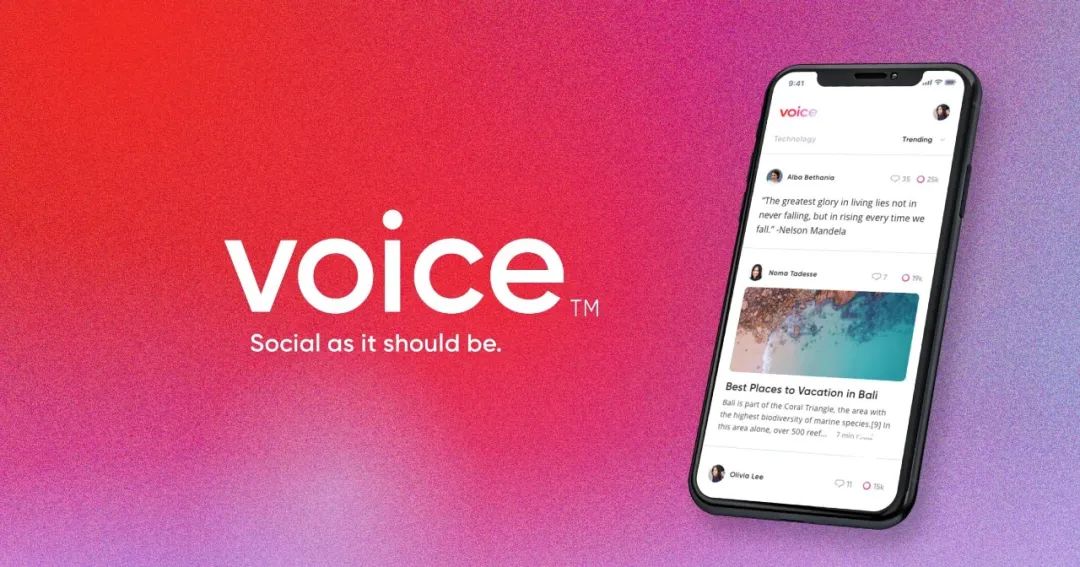Inflation drops to 1%, Voice goes live … EOS holders are still confused

Text | Edited by Zheng Yi | Produced by Bi Tongtong | PANews
"I really hesitated recently. I have been holding on for two years. Don't continue to do it." Yuan Renwei, an old player who had received EOS at a high level in 2018, complained to PANews. ".
Voice, known as the "Facebook killer", arrived half a month ago, but the "market carnival" in his mind has not disappeared. The community is still pessimistic, the currency price is always low, and the negative voices of institutions such as Coinbase and Wechsler rating have further worsened the belief of HODLERs.
- BarkisNetwork Super Node Program Election Phase Begins
- How to deal with new coronary pneumonia? Coinbase releases four-level response plan
- Substrate minimalist summary: features, features and consensus
From the perspective of "Old Leek" Yuan Renwei, this public chain that was once even titled "Blockchain 3.0" seems to be falling to the bottom. Resource systems are congested, DAPPs have fled one after another, centralization of governance, and the control of supernodes by exchanges has frequently occurred. In the general environment, it is facing challenges from emerging blockchain systems such as Nervos, Cosmos, Algorand.
"The current situation is that everyone wants to step on EOS." Yuan Renwei said helplessly, the idea of shifting positions kept coming up, but the unwillingness in his heart drove him to persist.

Node dilemma is controversial
Since the launch of the EOS mainnet, disputes over nodes have never stopped.
In EOS's DPOS consensus mechanism, nodes are divided into two types: super nodes and standby nodes, of which the super nodes are composed of the first 21 nodes with the highest votes. The large number of super nodes controlled by Chinese nodes has caused dissatisfaction among overseas communities.
According to PANews statistics, as of February 25, 2020, among the top 21 super nodes in EOS, the nodes registered in China occupy 13 seats, with a total vote rate of 36.8%, and the statistics are extended to the top 30 We can find that Chinese nodes occupy 21 seats, and the total vote rate is even more than half of all nodes, reaching 51.8%. In other words, Chinese nodes have a very strong dominance over the EOS network objectively, which is why the Western nodes are generally dissatisfied.

In November 2019, the eosnewyork (EOS New York) node revealed that the Chinese node eosshenzhen (EOS Shenzhen), in addition to operating its own nodes, also controlled stargalaxybp, validatoreos, eoszeusiobp1, eosunioniobp, eosathenabp1, and eosrainbowbp. EOS New York believes that the node's behavior poses a threat to the security of the EOS main network, and initiated a proposal to delete six nodes.
Not only the inter-node instability, but also the large number of exchanges controlling super nodes has also caused concern among the community and developers. According to PANews statistics, among the top 21 super nodes with the highest votes, the exchange occupies 7 of them, and the total vote rate reached 20.57%.

As a place to provide liquidity, exchanges have a natural advantage in the DPoS entrusted voting model. Users worry that the tokens they deposit will be used by the exchange for voting without permission, but they have nothing to gain.

Blockchain 3.0 becomes a "blocking" field
EOS once became popular with a high TPS, but now it is constantly reduced to a "blocking" field. On November 1, 2019, ENU founder Aiden Pearce launched an airdrop of a project called EIDOS. Users only need to transfer any number of EOS to the smart contract of the project, and they will receive certain EIDOS tokens. As the well-known creator of the blockchain UBI concept, EIDOS instantly ignited the enthusiasm of EOS users. On this day, the quiet mainnet of EOS was “blasted” directly, and users were surprised to find that due to resource congestion, their account could not conduct any transactions.
As we all know, unlike the public chains that burn GAS and other transfers such as Ethereum, EOS mainly operates a free transfer system. The EOS system is a combination of RAM, NET, and CPU. Users need to pledge certain EOS tokens to obtain CPU resources for transfers. However, the CPU resources obtained by users are not constant. It is pledged with EOS on the entire network. The quantity is linked, which means that when a large amount of EOS is pledged in exchange for CPU resources, the pledge pressure on ordinary users will increase greatly, and even in order to make a transfer, EOS of more than one hundred yuan needs to be pledged.
However, this is not the first time that the EOS main network has been congested. As early as the end of 2018, when gambling applications swept the currency circle, in the face of high market dividends, miners frantically crammed every EOS into the CPU system. EOS's main network was almost paralyzed at that time, but after a year Still the same.
High pledge fees are prohibitive for project owners and ordinary users. EOS's "free transfer" seems to be in name, in order to make their applications run smoothly, the project party often needs to lease a large amount of EOS for pledge, and this cost has caused many project parties Misery. Although the EOS parent company block.one updated and optimized the resource model several times, and launched the resource exchange REX, hoping to adjust the resource congestion with market functions, it has not changed the embarrassing situation of "popular applications easily block the entire network."
On November 27, 2019, KARMA, an EOS-based social platform, announced that it would migrate applications to the WAX chain. On December 2, South Korea ’s EOS chain gaming platform ITAM announced its cooperation with WAX to launch new games on its chain. Subsequently, games such as Prospectors The migration project has also begun. Even the long-standing EOS game application daily living topped the list. The famous EOS Knight also changed its name to Knight Story. An upgraded version was released on the Tron network. According to the game studio, it was migrated from EOS. The reason for the wave field is "the performance will be much better there."
"Migrating applications to WAX-type sidechains is mainly affected by development costs." The Newdex team told PANews that, in their opinion, due to the impact of EOS mainnet CPU congestion, the project party's migration to other chains can reduce the application Own development costs.
Fu Pan, CEO of TokenPocket, a wallet service provider, pointed out that the root cause of DAPP leaving the main network is "the main network resource costs are difficult to carry, and the side chain amplifies subsidies." In his opinion, the developers have not migrated their DAPP projects to other main networks Instead, it chooses side chain operation, but it illustrates the sustainable development potential of EOS.

The Gamble of On-chain Governance
As the main online line, which mainly focuses on "weakly centralized" blockchain systems, EOS has never disguised its determination to accept supervision and introduce "rule by man." Under the general environment of "Code is law", EOS was the first to launch The ECAF (EOS Core Arbitration Forum) department aims to resolve disputes on the chain and resolve asset disputes. Former block.one CTO Thomas Cox has portrayed it as a utopian department, making users highly anticipated.
However, the first arbitration was unsatisfactory after ECAF went live. In the arbitration case coded 2018-06-19-AO-001, ECAF did not freeze the accounts of both parties within tens of hours after the victim applied for arbitration. When the super nodes anxiously asked the case, ECAF directly announced that it would not issue any arbitration order because its own rules were not yet perfect.
Six months later, on November 8, 2018, the core arbitral tribunal ECAF finally conducted its first arbitration. Unexpectedly, the plaintiff who stole the account's private key from the phishing site in the case won. Then, ECAF ordered the supernode to modify the account's private key and return it to the lawsuit. The community was uproar.
"The private key can be modified at will?"
"Who gives them rights?"
"How was the arbitrator selected?"
A series of questions came out, and there was no such "absurd" script in the centralized financial system, and it even happened in the decentralized network. Undoubtedly, ECAF is the deadliest flaw in the entire EOS network to most people.
In addition, the voting rules, token collateral, and resource governance model of the EOS network have also undergone several changes, which are still highly controversial. From the EOS mainnet to the present, node voting has adopted a mechanism of 1 vote and 30 votes. Under this rule, a large number of "conspiracy" nodes have rapidly spawned. Nodes conspired with each other to form mutual voting positions and shared them. Block interest.
As early as 2018, the information on node mutual investment data leaked by employees of an exchange once showed the seriousness of the problem. The data table contains the "node mutual investment table", "control node voting situation", "node income statement" "The four tables of" Ticket positions and account conditions "show in detail the amazing fact that the exchange controls other nodes and supports 傀儡 nodes.
After being aware of these issues, the two most influential figures of EOS, BM and Brendan Blumer, began to consider the "1 vote, 1 vote" mechanism with high community voices. The latest voting governance of EOS, written by BM on October 15, 2019 The plan, in addition to the plan for the six mortgage pools, clearly stated that the voting rights pledge in the new plan took 1 vote and 1 vote. Brendan Blumer also expressed his own position in the video program of Colin Talks Crypto.

Could Voice be the key to turning the tide?
At the B1june conference in 2019, EOS parent company block.one announced that it would release Voice, a blockchain social product based on the EOS network. In the official introduction, Voice is a "blockchain-based, more transparent Social media applications. "
In order to deploy and promote Voice, block.one also invested a lot of resources. Just buying Voice.com domain name, it cost 30 million US dollars, equivalent to about 210 million yuan. Although this move has been questioned by the community, many people I believe that this money will be of greater value in the construction of EOS, but Brendan Blumer, the CEO of block.one, said: "Voice is a powerful and high-value brand name. Facebook founder Zack Burke In a recent 5-minute speech, 37 voices were mentioned. Although $ 30 million is a huge sum, our ambitious goals can be matched. "
Not only that, block.one also purchased 3.3 million EOS RAM resources, which will be used to create accounts for Voice users. This move instantly raised the price of RAM by 300%, and relieved all RAM speculators.

On February 14, 2020, the highly anticipated Voice project was launched as scheduled, but did not allow a large Chinese user group to participate in it. According to the official email description, Voice only allows citizens living in the United States to log in to the test, and it will be extended to English. The country will eventually be promoted globally. During the test phase, non-login users will not even be able to see the content on Voice. After 8 months of waiting, Yuan Renwei was a little bit chilled in exchange for distant tests and iterations.
"In the beginning, I wanted to join the test as soon as possible. Later, when I saw the email, it went out." Yuan Renwei said. As for the key to Voice's success, Yuan Renwei actually thinks that Voice can attract a large number of celebrities and big coffees to the platform to bring off-site traffic instead of relying on players in the currency circle to entertain themselves.
Although waiting for the test is a bit tedious, Yuan Renwei believes that it is “expecting” after the test. Block.one CEO Brendan Blumer tweeted that once the test is over, it will be put into marketing. Previously, the founder of EOS Block.one CTO BM has said that Voice's overall budget is estimated at $ 150 million.
Because of block.one's large investment in the Voice project, both blockchain practitioners and ordinary currency holders have high expectations for this product. Practitioners expect that Block.one, one of the richest companies in this circle, can bring new opportunities to the industry through this "throwing money", or cause more investors to be interested in blockchain, or let The attitude of the regulators has changed; the holders hope that this "epic" benefit will greatly increase the price of EOS's currency, thereby obtaining excess profits.
However, some in the industry have expressed concern about this. DonRadar's press director Jon Jordan believes that block.one has spent too much resources on Voice in order to build it into a killer application, but he is still worried that all this will become useless.

block.one is still moving forward
Although the currency price of EOS was sluggish, the main network was congested, and the community was mourning. However, most developers still report their optimism. Even though block.one has not yet submitted an excellent answer to the on-chain governance, it has achieved good results in code protocols and regulatory responses.
On September 30, 2019, according to the SEC's official website and block.one Twitter announcement, the two have reached a settlement. block.one dismissed the SEC's allegations of its first issuance of unregistered digital tokens (ICOs) by paying a $ 24 million civil fine, while granting it significant exemptions for future business, which means that block.one and EOS has come to a successful conclusion on the road to compliance. On the other hand, Telegram, which raised US $ 1.7 billion, is still caught in a lawsuit with the US Securities and Exchange Commission (SEC), and its issued TON tokens face a comprehensive sales ban.
Technically, the "resource payment function" in EOS 1.8 and the EOS VM introduced in EOS 2.0 are major breakthroughs in the mainnet update. The resource payment function makes the settlement of blockchain network fees more flexible. The project party can take the initiative to bear the CPU cost for users. Ordinary C users can use EOS-based applications more conveniently. EOS VM is a The WebAssembly engine designed by the chain smart contract, compared to EOS 1.0, can improve the smart contract's operating speed by about 12 times, greatly optimizing the CPU usage efficiency.
At the same time, in order to expand and improve the EOS ecosystem, EOS VC launched a project funding plan in December 2019, and those who passed the review will receive a grant of $ 50,000. EOS VC stated that the scale of the application project is not a problem, and they are looking for high-quality teams with "prospects."
Before the publication, on February 25, the proposal of "setting the total inflation rate" initiated by EOS super node EOSNation has been officially adopted. The proposal calls for EOS's total inflation rate to be changed from 5% to 1%, and no longer injected into the eosio.saving account.
Retail retailer Yuan Renwei is still struggling, and developers are still hoping. Where is the future of EOS? Can the resource model skyrocket after the solution? Can Voice break through the barriers between blockchain and the traditional world? The answer can only be given to time.
We will continue to update Blocking; if you have any questions or suggestions, please contact us!
Was this article helpful?
93 out of 132 found this helpful
Related articles
- People's Daily Overseas Edition: Blockchain application helps epidemic prevention and control
- "Chengdu Chainan" Receives New Round of Financing from Qianhai Mother Fund, Yang Xia, Founder of Babbitt Exclusive Dialogue
- Tang Xialing: How Many Blockchains Can Be Used As Many Trust Loss Scenarios
- Babbitt Column | Small and medium-sized enterprises in the epidemic may ask for help from on-chain equity to survive
- Alphabet: From investment to R & D and application, Google blockchain is catching up
- Gray scale increased bitcoin to 285,000, Wall Street capital is "flooding" into the currency market?
- Bloomberg proposes cryptocurrency regulatory framework, central bank issues "financial distributed ledger specifications"






